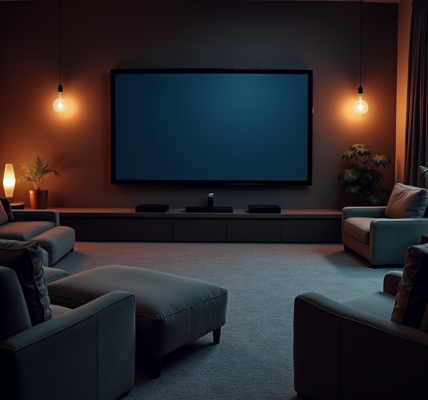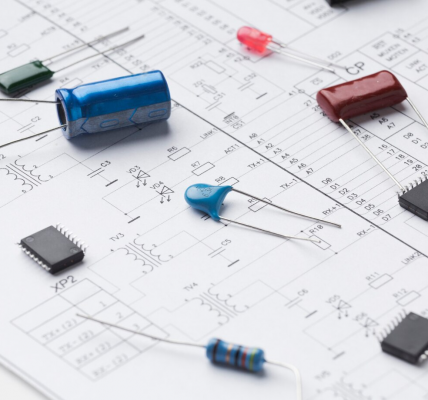It’s a common scenario: you’ve got a room beautifully lit with the soft glow of LED lights, but suddenly, you can’t seem to find the remote to change the colors. The good news is that even without the handheld convenience of a remote, you’re not stuck with one color. This article reveals the tricks and tips for changing LED light colors using alternative methods. Whether it’s strip lights in your gaming room or LED lit decor in your lounge, losing the remote doesn’t mean losing control over your lighting effects. By the end of this guide, you’ll know how to switch hues with ease and keep your space looking its best.
Getting to Know Your LED Light System
Before we dive into the methods of control, let’s understand the kinds of LED systems available. Smart bulbs, LED strips, and LED fixtures are the most common. Each provides a range of lighting effects and color changing options designed to suit your personal style. Yet, they vary in their control systems. While some can connect to other smart devices, others rely on built-in manual controls. Knowing what type of LED system you have is the first step in determining how you can change colors without a remote.

Step-by-Step Guide: Changing LED Light Color Without a Remote
If you’re wanting to adjust your LED lights without a remote, the following steps will guide you through various options based on your LED type. For strip lights or LED strips, many come equipped with a control button directly on the strip or the power adapter, allowing for manual operation. Smart bulbs often have a reset sequence that, when triggered, cycles through different colors. LED fixtures might also allow color changing through a sequence of power toggles using the wall switch.
- Locate the manual control button on the LED strip or adapter.
- Press or hold the button to cycle through different colors.
- For smart bulbs, turn the power off and on in rapid succession to initiate the color cycle mode.
- Use the wall switch to toggle power for LED fixtures, watching for the lighting to blink, indicating color changing mode.
Alternative Solutions
If the manual button method isn’t what you’re looking for, or if you’re dealing with smart bulbs or fixtures, apps and voice control could also provide a modern solution. Most smart bulbs and LED strips are now designed to work with specific apps that you will need to download onto your mobile device or through voice commands via smart home assistants.
| Light Type | App Control | Voice Control | Physical Controls |
|---|---|---|---|
| Smart Bulbs | Yes | Yes | Possible |
| LED Strips | Yes | Yes | Yes |
| LED Fixtures | Sometimes | Sometimes | Yes |

DIY Solutions to Replicate Remote Functionality
For those who enjoy a hands-on approach, creating a simple LED controller is a satisfying workaround. This can range from wiring a physical dimmer switch to programming a microcontroller to interact with your LED system. DIY enthusiasts will not only regain the ability to change colors on their strips and lit areas but also have the pleasure of customizing their control systems from scratch.
- Research the LED specifications to ensure compatibility with controllers.
- Choose a physical dimmer or microcontroller based on your skill level.
- Follow online tutorials or community forums for step-by-step building instructions.
Troubleshooting Common Issues
Perhaps you’ve tried all the above, but your LED strips won’t budge from their steadfast color. It could be a simple case of a compatibility issue between the strips and the proposed control method. Other times, power disruptions or faulty connections are to blame. A reliable troubleshoot is finding the source of the issue, whether it’s the power supply, the control method, or the LED strips themselves.
Conclusion
Even without remote controls, your LED strips and smart bulbs have various paths to color transformation. It’s about leveraging the built-in functionality of your LED system and exploring alternative control methods. Whether using smartphone apps, voice commands, manual controls, or embarking on a DIY project, you have the power to command the different colors of your LED lighting. Embrace the full spectrum of your LEDs’ capabilities and enjoy creating the perfect ambiance in your space, remote not required.

FAQs
1. What should I do if my LED light doesn’t have a wall switch or button?
– Check if it supports a smartphone app or other smart home devices for control. Otherwise, installing an inline switch may be necessary.
2. Can I use a universal remote to control my LED lights?
– Some LED lights are compatible with universal remotes. Consult the light’s documentation for compatibility and setup instructions.
3. Are there any safety concerns with manually changing LED light colors?
– Always turn off the LED system before attempting manual adjustments to avoid the risk of electric shock. Follow the manufacturer’s safety guidelines.
4. What are some common voice control devices that can change LED light colors?
– Amazon Alexa, Google Assistant, and Apple HomeKit can control compatible smart LED lights through voice commands.
5. Why won’t my smartphone app connect to my LED lights?
– Make sure your phone is connected to the same Wi-Fi network as your smart LED lights and that you’ve installed the correct app. Also, check that the LED lights are powered on. A device restart or software update may solve connectivity problems.









